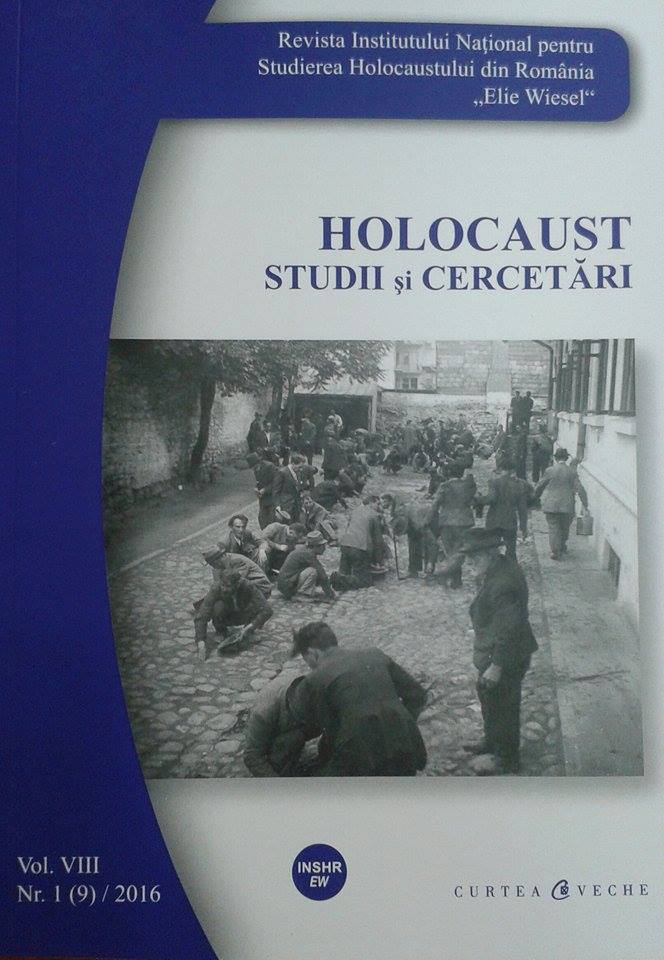Voicing the Death of the Jews from Northern Transylvania
Through Heritage and Its Social Appropriation
Voicing the Death of the Jews from Northern Transylvania
Through Heritage and Its Social Appropriation
Author(s): Sonia CatrinaSubject(s): History, History of the Holocaust
Published by: Institutul National pentru Studierea Holocaustului din Romania ELIE WIESEL
Keywords: Holocaust;heritage-making;memory-work;the “Eva Heyman” Memorial;Northern Transylvania
Summary/Abstract: Linking our own research interest for the processes of public memory building and remembrance of difficult pasts through the lens of heritage-work, the aim of the current study is to address discourses on ‘the Holocaust issue’ and perceptions of Jews in Romania after more than two decades since the 1989 Revolution. Our focus is mainly on the perceptions of Jewish people from the city of Oradea, a territory where two thirds of about 27000 Jews were killed during WWII. By examining private initiatives of heritage-making carried out with the purpose of contributing to the preservation of the memory of those killed during WWII and comparing them with the official ones, we intend to disclose aspects of the ‘social distance’ and intercultural communication on this Romanian territory where Jews and Roma people were ghettoized, then sent directly to extermination camps (mainly to Auschwitz), where a genocide was carried out. The symbolic re-enactment of Jewish history in the public sphere through heritage-making helps remodel perceptions, attitudes, and behaviours in a multi-ethnic society by promoting moral values regarding other human beings such as tolerance and mutual respect. Therefore, our study inquires to what extent the public memory relating to the Holocaust contributed to shaping social relationships in a multi-cultural society. Our anthropological reflection on the (re-)enactment of the Jewish history during the Holocaust through heritage-making and its social appropriation offer insights into (1) discourses on the Holocaust in Romania and the way in which public memory operates, (2) perceptions of Jews among local people from Oradea and, (3) the building of identity narratives on the acknowledgment or denial of a dark side in our past.
Journal: Holocaust. Studii şi cercetări
- Issue Year: VIII/2016
- Issue No: 09
- Page Range: 227-288
- Page Count: 62
- Language: English
- Content File-PDF

